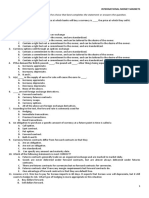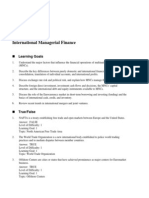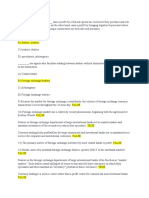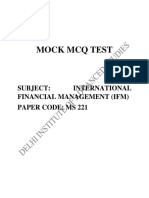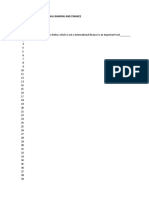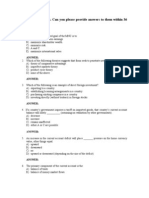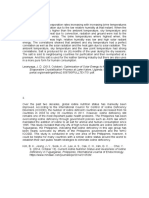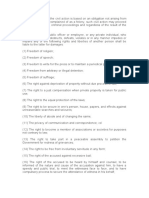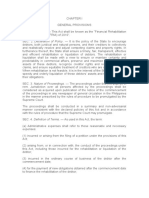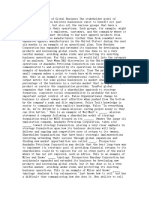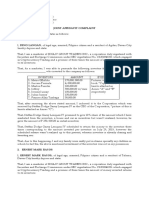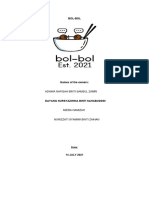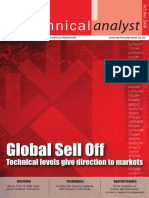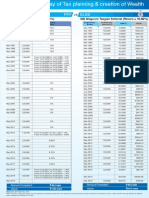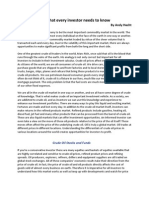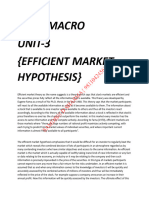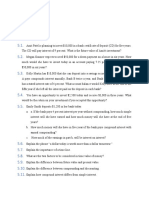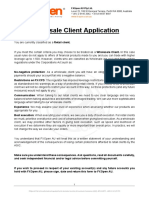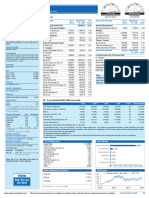Chapter 14: Global Financial
Management
Prolonged periods of relatively high dollar values in world currency markets would be
a disadvantage to U.S. exporters and an advantage to their foreign competitors.
TRUE
Marked-to-market involves the trading of futures contracts in major currencies and
offering price transparency and efficiency in addition to elimination of counterparty
risk due to guaranteed payments on contract.
FALSE
If losses occur causing a market participant’s balance to fall below the maintenance
margin at the end of the trading day, a call option occurs that requires the bank to
replenish the investor’s trading account.
FALSE
Bonds that are sold in any country outside the home country, but in the home
country’s currency, are called junk bonds.
FALSE
On October 19, 1987 (Black Monday) stock prices in Hong Kong began collapsing
and spread throughout the day into the Europe and then North America. This is an
example of contagion.
TRUE
The cost of equity is required rate of return by stockholders in a firm and is estimated
by means of the Capital Asset Pricing Model (CAPM).
TRUE
The sensitivity of a stock to market risk affected by currency movements is called the
weighted average cost of capital.
FALSE
The impact of random change in the value of one currency with respect to other
currencies is called the _____ risk.
EXCHANGE RATE
Two kinds of short-term effects of currency movements are _____ risk and _____
risk.
transactions; translation
_____ risk is associated with the short-term effects of currency movements on the
consolidated accounting statements of a firm.
TRANSLATION
A basket of currencies consisting of dollars, euros, pounds, and yen created by the
International Monetary Fund is known as the _____.
Special Drawing Right
�Using currency derivatives to reduce potential transaction, translation, and economic
risks of currency movements that could lead to losses for a firm or investor is
called_____.
Hedging
Buying a currency in a currency futures contract and profiting on an increase in the
value of the currency over time is called _____.
a long position
Selling a currency in a currency futures contract and profiting on a decrease in the
value of the currency over time is called _____.
a short position
Losses that are incurred and that cause the participant’s balance to fall below the
maintenance margin at the end of the trading day is called a _____.
MARGIN CALL
Forward contracts:
are less standardized than futures contracts.
A derivatives market run by large banks is called a(n) _____.
over-the-counter market
_____ allow firms to exchange currencies at a previously agreed exchange rate as a
way to hedge exchange rate movements.
Currency swaps
Of the following, which is NOT true about international banking and payments?
A commercial letter of credit is usually irrevocable.
Payment in advance is the safest method.
An open account is a simple agreement wherein the exporter sends an invoice with the
goods and the exporter pays upon the receipt.
Payment in advance does not expose the importer to some risk concerning
delivery of the goods.
A commercial letter of credit offers payment protection to both parties.
The safest method available to an exporter, but that which exposes the importer to
some risk related to delivery of goods, is called _____.
PAYMENT IN ADVANCE
When a bank sells a LC into the financial marketplace as a money market instrument,
it is called a(n) _____.
BANKER’S ACCEPTANCE
�A simple agreement wherein the exporter sends an invoice with the goods and the
exporter pays upon the receipt is called a(n) _____.
open account
Large international firms deal in considerable volumes of goods and often must obtain
a(n) _____ from a group of banks known as a syndicate..
participation loan
Bonds that are sold in any country outside the home country, but in the home
country’s currency, are called _____.
Eurobonds
Home bias tends to
reduce diversification.
Of the following, which is NOT true about the IMF and World Bank?
More than 180 countries participate as members of the IMF.
The IMF provides short-term loans to countries in financial crises.
The World Bank focuses upon long-term loans to developing countries seeking
financing for economic reform purposes intended to raise the standard of living.
Their purposes are to promote international monetary stability and international trade.
They were established in 1890.
The required rate of return demanded by stock and bond investors and used in net
present value capital budgeting analyses as the discount rate is called the _____.
cost of capital
The weighted average of different interest rates paid on long-term borrowings is
called the _____.
cost of debt
A stock value measured with the coefficient obtained by regressing the stock’s return
on a currency’s return over time is known as the _____.
exchange rate sensitivity
The sensitivity of a stock to market risk affected by currency movements is known as
the _____.
exchange risk beta


